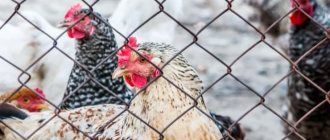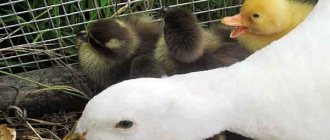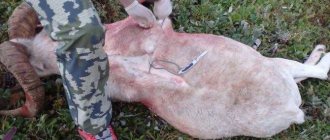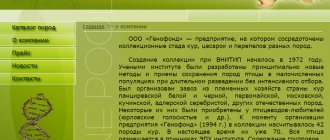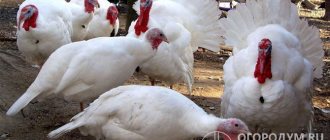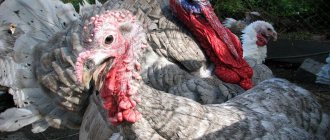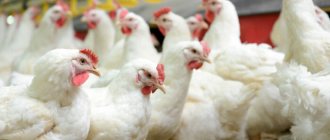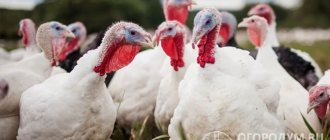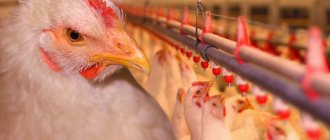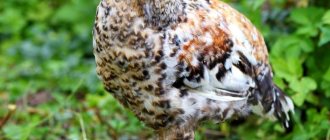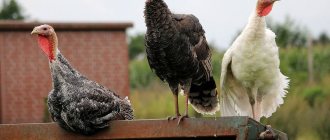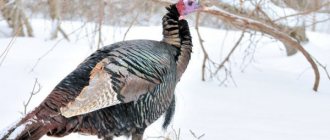Turkey crosses are intended mainly for industrial breeding. But now many private farms buy hybrid birds. They are characterized by rapid growth and large body weight. Therefore, it is profitable to grow them; at moderate feed costs, they obtain a high yield of meat.
Turkey crosses
Crosses are divided into heavy, medium and light. They come from America, Western Europe, some were bred in our country. The best suppliers of crosses are France, the Netherlands, Hungary, Germany, Great Britain.
What is cross
Before talking about crosses, you should determine what they are and how they differ from turkey breeds. To improve the food quality of turkey, breeders select lines with one or two distinctive characteristics. For example, high weight, vitality or egg production. The offspring in the lines must inherit these characteristics. One or several breeds take part in the creation of lines.
To improve the quality of the lines, they are crossed with each other. Hybrids are superior to their parents in many respects. This phenomenon in genetics is called heterosis. Lines that produce improved offspring when crossed are considered “combinable.” The set of lines, parents and hybrids is called a cross. Two, three or four lines take part in creating a cross. Accordingly, they are called two-linear, terlinear or four-linear. By weight category, crosses are divided into heavy, light and medium. Severe ones include:
- Hybrid Converter
- Big 6
- Hidon
To the middle ones:
- Hybrid Converter
- BIG-9
To the lungs:
- Station wagon
- Victoria
- But-8
White broad-chested breed
White Broadbreasted turkeys are not a cross breed, but many lines have been created based on them. Within the breed itself there are three crosses that were bred by the British based on ten lines. Crosses have the following characteristics:
- A lung at 13 weeks weighs 3.8 kg, at 20 weeks the weight of males is 8-9 kg, females 4.5-5.5 kg
- The average weight at 13 weeks of age is 4.1 kg, at 20 weeks - 15-17 kg (males), 6-7 kg for females.
- A heavy one at 13 weeks has a mass of 5.2 kg, at 20 weeks males weigh 22-25 kg, females - 10-11 kg.
The white broad-breasted turkey grows up to 90-100 days, the meat yield of this breed is high, and it has an excellent presentation. Turkeys begin to lay eggs at 9 months.
White broad-breasted turkeys
Over the course of six months, up to 100-120 pieces are put aside. About 85-90% of the testicles are fertilized, and turkey poults are hatched in 60-70% of cases. The breed is whimsical in keeping, does not tolerate low temperatures, birds get sick at the first frost. Therefore, its cultivation is popular in the southern regions.
Uzbek fawn
The Uzbek fawn breed is popular in Asian countries, although it was selected in the Republic of Uzbekistan. The yield of eggs is small and amounts to only fifty eggs annually. Fertilized testicles are usually up to 90%, and about 70% are hatched.
The fawn breed of turkeys got its name due to the color of its feathers. Birds have medium body sizes. The live weight of a turkey reaches 14 kg, and that of a turkey – 6 kg. Individuals calmly tolerate sudden climate changes and are adapted to both Uzbekistan and Russia.
White Broad-chested Hybrid
The broad-chested white breed became the ancestor of several Hybrid crosses. They were brought out in the middle of the last century, in the USA. Birds are distinguished by the special composition of their meat; it is high in protein and low in fat and cholesterol. They also grow quickly and gain weight. Adapts well to any living conditions. The most famous hybrid broad-breasted turkey crosses are:
- Hybrid Converter (heavy cross)
- Hybrid Grade Maker (middle cross)
The hybrid converter reaches a bottomhole age of 140-150 days. By that time, turkeys of heavy crosses weigh 22-24 kilograms, and turkeys - 12 kilograms. Fast growth and moderate feed costs make the breed popular in many countries. The meat of the White Broad-breasted Hybrid Converter is tasty, and the carcass has excellent marketability.
Hybrid Grade Maker is a medium type cross. At 120-140 days, males weigh about 18-20 kg, and females - 10 kg. Turkeys have the best appearance of meat and carcass at 10-12 weeks. It is even featured in photographs in supermarkets and in commercials. Although the weight of turkeys by that time is small, up to 4-5 kg, birds are often sent for slaughter at this age.
North Caucasian bronze
The North Caucasian bronze breed is distributed among Stavropol, Kuban and Caucasian farms. They are perfectly adapted to the climate of these territories and are characterized by an undemanding nature. But these birds are accustomed to living in a herd and being kept on pasture. Appearance is distinguished by bronze color of feathers, dense massive body, strong limbs and wings, as well as a medium-sized head. Females begin laying eggs as early as nine months and are capable of laying up to one hundred eggs per year. Adult males reach a weight of 15 kg, and females only 7 kg.
Birds have strong immunity, and therefore the young survive almost one hundred percent. Turkeys of the North Caucasian Bronze breed are considered as a generalist for producing eggs and meat. These pets have an active type of behavior and a good appetite.
BIG-6
The most popular cross among industrial farms and private farms. Obtained by crossing females from the BIG-5 lines and males from the BUT-8 cross. Turkeys can reach 22-24 kilograms at the time of slaughter, and turkeys - 11 kilograms. At the same time, the meat yield is 80-85%, a figure not produced by any domestic animal. Turkeys grow quickly, already at three months they weigh 4.5 kilograms. Feed costs are moderate, which is why the broad-chested breed is profitable for breeding.
Turkeys BIG 6
The feathers of males and females BIG-6 are white, without a single spot, and fit tightly to the body. Turkeys have a bushy tail. The birds have a strong body, a long body, a wide and deep breast, about 30% of the meat is concentrated in it. The legs are high, widely spaced, and the hips are powerful. The head is medium in size, the “decorations” of males are bright red. In appearance and characteristics, the BIG-6 is similar to the Hybrid converter, but surpasses it in terms of weight gain.
Hybrid
The Hybrid Converter turkey breed originated in Canada by crossing Bronze Broadbreasts and White Dutch individuals. Birds are capable of rapid weight gain and can reach quite high speeds when running, which is why they received a second name - Indo-ostriches. The yield of the finished product can be up to 85%. Turkeys lay 50 eggs a year and hatch their own offspring. Adult specimens weigh from 12 to 22 kg, depending on gender. Hybrid turkeys are unpretentious and quickly acclimatize to different conditions, which is why they are considered one of the best among broilers.
BIG-9
The white turkey of the Big-9 middle cross is distinguished by good endurance and fertility. She lays about 120 eggs in six months, and turkey poults hatch from them in 80-85% of cases. This allows you to successfully breed birds even on farms and in households.
Turkeys quickly gain weight, at 17 weeks their weight is about 17 kilograms, and at 20 weeks - 21 kilograms. Females weigh approximately half as much, but grow faster. At the same time, the breed requires very little feed, consumption per kilogram of weight is lower than that of BIG-6. Cross became the founder of several new lines.
Feeding
The growth, taste of meat and health of the bird depend on proper feeding.
Farmers usually raise turkey poults for no more than 2-2.5 months. During this period, young animals are fed with specialized feed. When they get older than this age, the chicks consume a lot of food and their continued maintenance on industrial feed is too expensive.
The meat of young turkeys raised on high-quality feed has an excellent taste.
Other poultry farmers fatten their young animals with compound feed for no longer than a month, after which they begin to gradually introduce mash into the diet. By two months, the bird is completely transferred to a mixed or natural type of feeding.
With mixed feeding, mixed feed is given in the morning, and wet mash in the evening. In this way, young animals are raised for up to 6 months.
There are also those who, from the first days, prefer to feed exclusively homemade food. It is worth noting that with a natural type of feeding it is difficult to achieve good productivity in the end, even if all other conditions are met.
In the summer, adult turkeys are fed twice a day - morning and evening. If the walking area is devoid of vegetation, then during the day the bird is additionally given chopped grass (clover, nettles, dandelions, etc.). During the egg-laying period, it is recommended that turkeys add vitamins and minerals to their diet or feed them with specialized feed “for female turkeys.”
To provide feed, use ready-made feeders purchased in the store, or make them yourself from scrap materials. When keeping medium and heavy subspecies, feeders are securely fixed to the floor or weighted with boards, stones, and metal parts.
For watering young animals, it is recommended to use vacuum drinkers. Nipple water supply systems for adult turkeys are only convenient when keeping light subspecies. For everyone else, install regular drinking bowls or any suitable containers.
BUT-8
BUT-8 - another white and broad-breasted turkey, created by the same British breeders who developed the previous two crosses. She belongs to the light type, males at 20 weeks gain weight of about 17 kilograms, and females - 8.5 kilograms. Feed consumption for these birds increases with age by almost half. Therefore, farmers prefer to send them for slaughter at 13-17 weeks, maximum twenty. Otherwise, the cost of feeding will exceed the benefit from the meat received.
In appearance, BIG-8 turkeys are similar to other broilers. Their feathers are white and dense, without dark specks. The body is long, strong, with a well-developed chest. The legs are high and widely spaced. Turkeys have a beautifully curved neck, bright growths on the head, and a bushy tail. Therefore, many amateur poultry farmers also value the breed for its decorative qualities; turkeys are often displayed in photographs of private farms.
Station wagon
Turkeys of the Universal cross were bred in Russia and belong to the light type. At 16 weeks, males weigh about 6.5 kg, and females - 4.5 kg. The breed was developed by crossing two lines U1 and U2. The station wagon is inferior to its foreign “colleagues” in terms of rate of weight gain and final weight before slaughter. Positive aspects - vitality, unpretentiousness in food (you can feed with regular feed).
Turkeys do not lay too many eggs, only 60-70 eggs per year. But 85-90% of them are fertilized, and turkey poults are born in almost 100% of cases. Good fertility and developed maternal instinct make Universal popular among private farmers. Based on the cross, a new breed, Victoria, is now being created.
Hidon
The Hidon turkey cross was bred in the Netherlands and belongs to the heavy type. Before slaughter, adult males weigh about 18-20 kg. Feed costs for birds are low, weight gain is good. The yield of finished products for males is slightly higher than for females. Turkeys lay from 80 to 100 eggs in six months. In general, the productivity of birds is 80%, which makes their breeding profitable. True, it loses to BIG-6 in terms of weight gain, which is why many enterprises prefer to breed the BIG-6 hybrid.
Another disadvantage of Hidon turkeys is the difficult breeding and raising of poults. Young animals are afraid of dampness, drafts, and temperature changes. Therefore, in the first weeks, little chicks need special care. Natural fertilization, due to the large weight of turkeys, is also difficult. And to carry out an artificial one requires experience. Therefore, novice poultry farmers are not recommended to buy this breed.
French birds
The French turkey does not have a large body size, but has attractive plumage. The breed is characterized by high survival rate of chicks. At four months, the birds already gain enough weight for slaughter. Turkeys love to walk in space, which must be taken into account when breeding them. Birds are unpretentious in their diet and rarely get sick.
